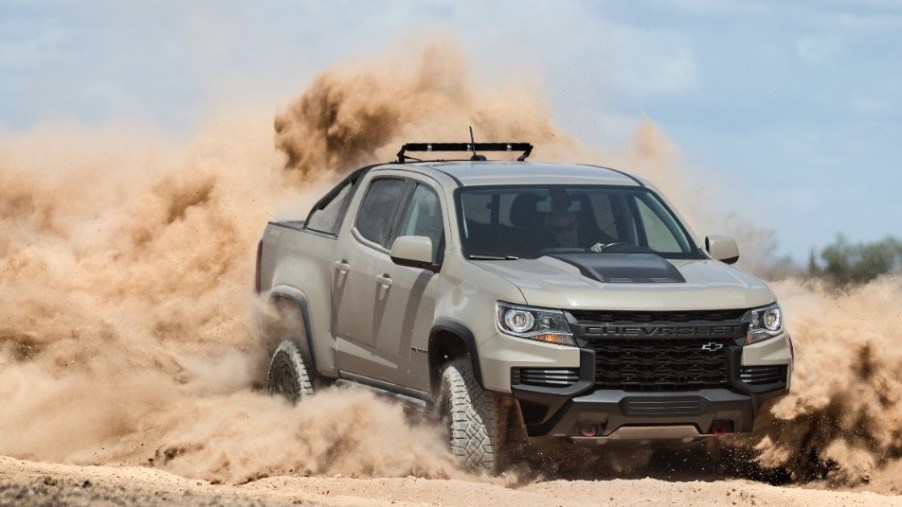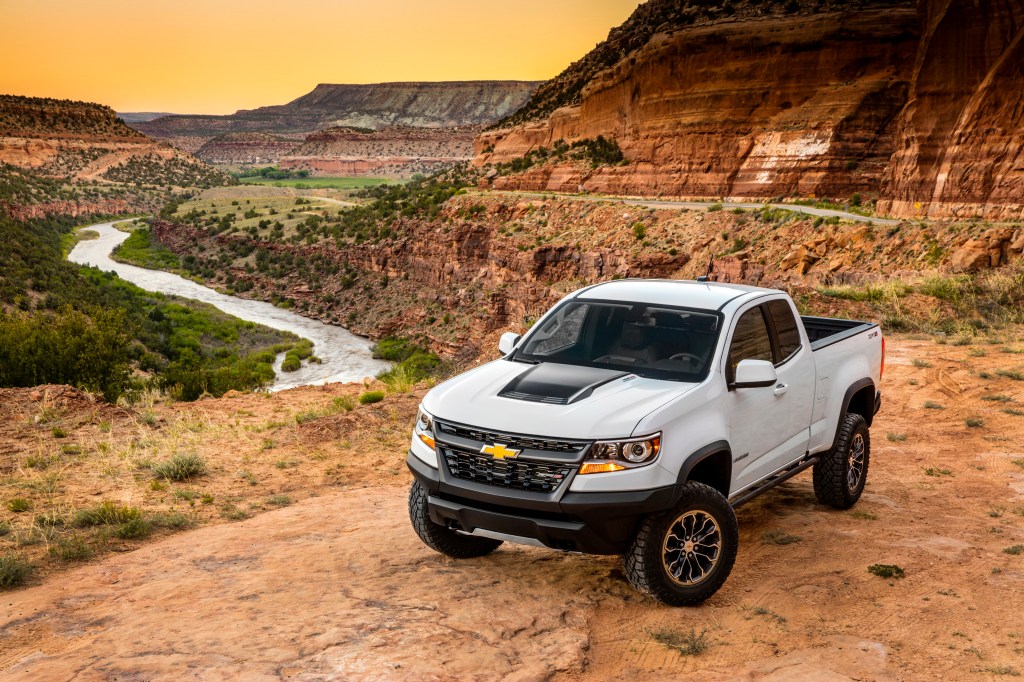
How Safe Is the Chevrolet Colorado?
Overall, the Chevrolet Colorado has gotten a warm reception from reviewers and drivers alike. But how does the Colorado rate for safety? We’ll look at its IIHS and NHTSA safety test results to see how the Chevy Colorado stacks up.
A so-so evaluation from the IIHS
The Insurance Institute Highway Safety tested a 2019 Colorado crew cab for metrics in crashworthiness, crash avoidance and mitigation, and child seat anchors. The Chevy truck performed well in many areas but fell alarmingly short in others.
The truck earned good ratings in all areas of crashworthiness with the exception of the small overlap front test on the passenger side. This test simulates what happens when the front right corner of the truck collides at 40 mph with another vehicle or a stationary object such as a tree or a utility pole. The IIHS rated the Colorado as Marginal because the truck’s structure and safety cage didn’t withstand the collision.
For model years before 2017, the Colorado had the same problem on the driver’s side. Chevrolet strengthened the structure on the driver’s side in 2017 to remedy the problem but failed to do the same for the passenger side.
In the crash avoidance and mitigation category, the Chevy Colorado aced all tests except for its headlights. IIHS gave those a Poor rating. The insurance organization looked at two headlight variations for the truck across the base, WT, Z71, and LT trim levels. The headlights used for the Z71 and an LT variant produced excessive glare when the low beams were used. The other variation for the base, WT, and LT trims had poor visibility across the board when low-beam settings were used.
The IIHS evaluated the child seat anchors in the truck as Marginal on the LT trim level. The tether anchors on the upper part of the rear seat were in a hard-to-find location and could be easily confused for other hardware. The lower child seat anchors situated between the backrest and the seat cushion in the rear row were installed too deep into the seat.
Front-crash prevention for the Colorado was rated as Basic with optional equipment, the lowest rating for this category. The truck has an optional Forward Collision Alert as well as a general safety package. The IIHS did note that the truck didn’t have an automatic emergency braking system.
NHTSA also found a few weaknesses
The National Highway Traffic Safety Administration tested a 2020 Colorado 4X4 crew cab. NHTSA’s criteria for vehicle safety are structured differently from IIHS. It breaks testing into frontal crash, side crash, and rollover categories. A vehicle can be assigned up to five stars, depending on how well it meets NHTSA safety requirements during testing.
The Colorado received four stars in the frontal crash category. Testing in this category replicates a collision between two similar vehicles at 35 mph for both the driver and passenger sides. This test result lines up with the IIHS’ findings of passenger-side crash problems in the pickup.
For the side crash testing, the Chevy Colorado fared better with five stars. This test category includes a simulation of an intersection crash between a standing vehicle and a moving barrier at 35 mph and another simulation of a crash into a fixed object like a utility pole or a tree.
The rollover category is where the Colorado had its worst showing. NHTSA concluded that the Colorado had a 21.20% risk of rollover in a single-vehicle, loss-of-control situation. For this category, this truck only earned three stars.

Mixed results mean less safety
Taken together the IIHS and NHTSA ratings highlight a truck that needs to be safer. Chevy needs to address the Colorado’s front passenger-side collision problem since it’s a common one for mid-size pickup trucks. It should be relatively easy for it to improve its headlights and child seat anchor design. Most importantly, the carmaker should go back to the drawing board to reduce rollover risk. Adding some active safety features would also be a big plus.
The Chevy Colorado has so much going for it: a powerful engine, attractive styling, and an appealing interior. But, like its twin, the GMC Canyon, it still has some unresolved safety issues. Until the Colorado can start matching the safety ratings awarded its rivals the Toyota Tacoma and the Honda Ridgeline, it just isn’t safe enough.


